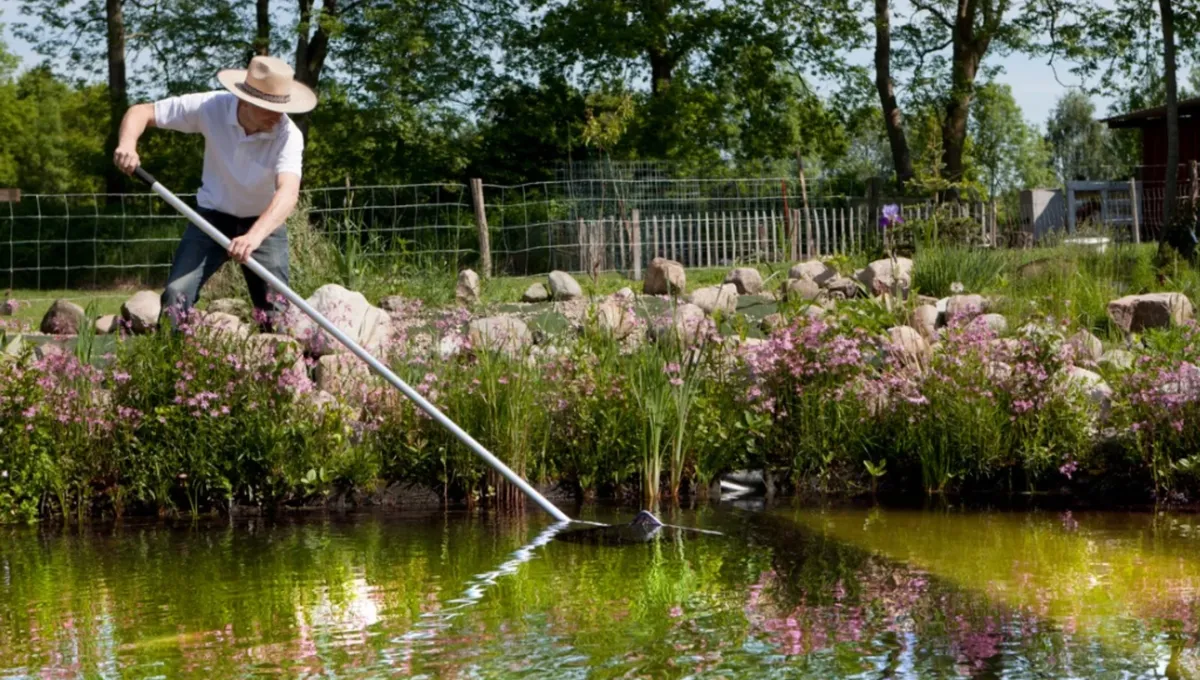Maintaining a clean and healthy fish pond is essential for your aquatic life’s well-being and your property’s overall aesthetics. Regular cleaning and maintenance can prevent the buildup of harmful substances and ensure a thriving ecosystem for your fish. In this guide, we will provide you with step-by-step instructions on effectively cleaning a fish pond (How To Clean A Fish Pond). As the United Fish Company, we understand the importance of maintaining a pristine environment for your fish, and we are here to assist you every step of the way.
Assessing the Pond’s Condition
Before you begin the cleaning process, it’s crucial to assess the current condition of your fish pond(How To Clean A Fish Pond). This will help you identify potential issues and determine the appropriate cleaning methods. Take note of the water quality, clarity, and the presence of any debris, algae, or excessive plant growth
Gathering the Necessary Equipment (How To Clean A Fish Pond)
To clean your fish pond efficiently, gather the following equipment:
Pond net:
Use a net with fine mesh to remove any debris, leaves, or floating matter from the water’s surface.
Pond vacuum:
A pond vacuum helps remove sludge, sediment, and organic matter settled at the bottom of the pond.
Pond brush:
Use a brush designed for ponds to scrub away algae and grime from the pond walls and surfaces.
Water testing kit:
This kit will allow you to measure the pH, ammonia, nitrate, and nitrite levels in your pond water.
Garden hose:
After cleaning, you’ll need a hose to refill the pond.
Buckets and containers:
These will be useful for holding the fish temporarily during the cleaning process.
Removing Fish
Before you begin the cleaning process, carefully remove the fish from the pond(How To Clean A Fish Pond) using a net. Place them in a clean container filled with pond(How To Clean A Fish Pond) water to keep them safe and comfortable during cleaning. It is crucial to handle the fish gently and avoid any unnecessary stress.
Draining the Pond
You can begin draining the pond once the fish have been safely relocated. Use a submersible pump or a pond (How To Clean A Fish Pond) drain to remove the water. Direct the drained water away from sensitive areas to avoid flooding or water damage.
Cleaning the Pond
Removing Debris:
With the pond drained, use a net to remove any large debris, such as leaves, twigs, or branches. Dispose of this waste properly.
Cleaning the Pond Liner:
Gently scrub the pond liner with a brush to remove algae, dirt, and grime. Be cautious not to damage the liner while cleaning. Rinse the liner thoroughly with water.
Cleaning Pond Surfaces:
Scrub the walls and surfaces of the pond using the pond brush to remove any remaining algae or residue. Pay close attention to corners, crevices, and areas with excessive algae growth.
Pond Vacuuming:
Utilize the pond (How To Clean A Fish Pond) vacuum to remove sludge and sediment that has settled at the bottom of the pond. Move the vacuum slowly and systematically to ensure you cover the entire area. Empty the vacuum regularly as it fills up.
Cleaning Filters and Pumps:
Remove and clean the filters and pumps according to the manufacturer’s instructions. This will help maintain their efficiency and prevent any clogging or malfunctioning.
Refilling the Pond
Once the pond is thoroughly cleaned, it’s time to refill it with fresh water. Use a garden hose and allow the water to fill the pond gradually. Ensure the water temperature matches the original pond water to prevent any temperature shock to the fish.
Reintroducing the Fish
Before reintroducing the fish, acclimate them slowly to the new water temperature by floating their container in the pond (How To Clean A Fish Pond). This allows them to adjust gradually. After 15-20 minutes, release the fish back into their clean and refreshed habitat.
Monitoring Water Quality
Using a water testing kit, regularly monitor the water quality parameters, such as pH, ammonia, nitrate, and nitrite levels. Maintaining appropriate levels of these parameters is vital for the health and well-being of your fish.
Preventative Measures
To minimize the need for extensive cleaning, consider implementing these preventative measures:
Install a pond skimmer:
A pond skimmer helps remove debris from the water surface before it sinks to the bottom.
Control excessive plant growth:
Monitor and trim aquatic plants regularly to prevent overgrowth, which can disrupt the pond’s balance.
Use beneficial bacteria:
Add helpful bacteria to the pond to promote the breakdown of organic matter and maintain water clarity.
Balance fish population:
Avoid overcrowding the pond with too many fish, which can lead to poor water quality.
Cleaning a fish pond (How To Clean A Fish Pond) is crucial to ensure the health and longevity of your aquatic ecosystem. Following the steps outlined in this guide, you can maintain a clean and thriving pond environment for your fish. Remember to approach the cleaning process carefully and regularly monitor water quality to prevent any potential issues. As the United Fish Company, we are committed to helping you maintain a healthy and beautiful fish pond.













